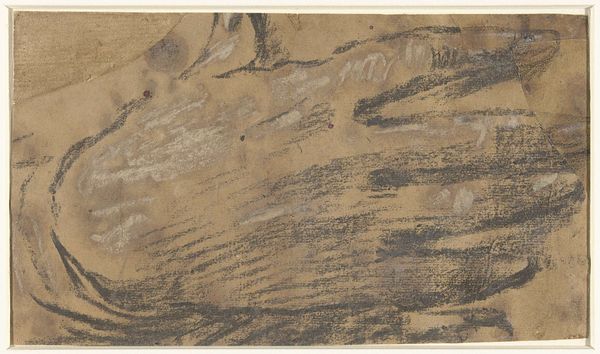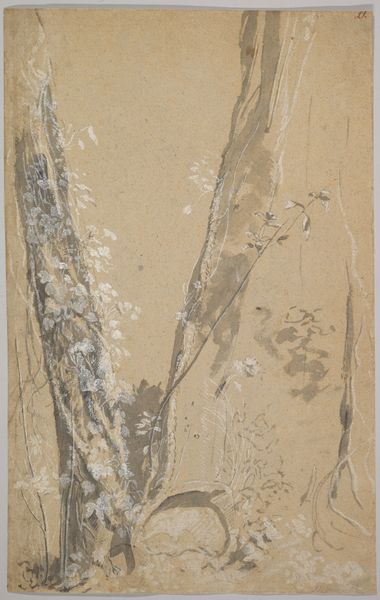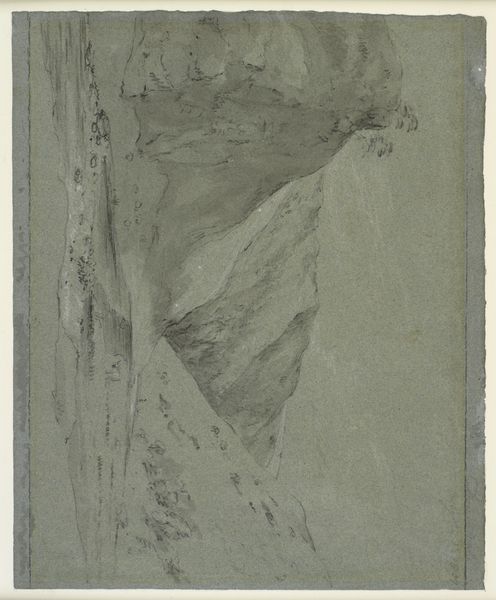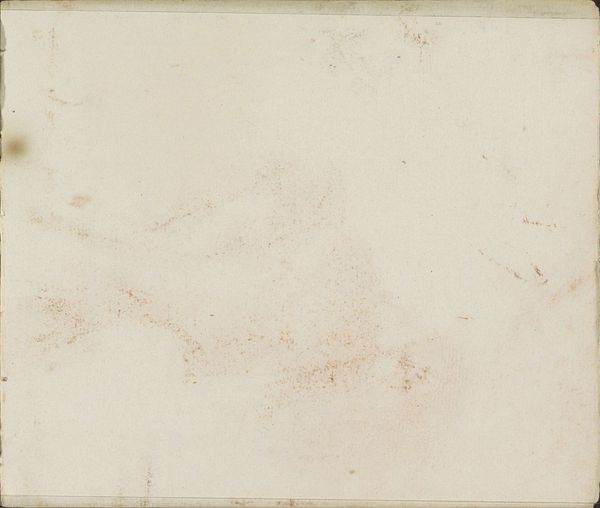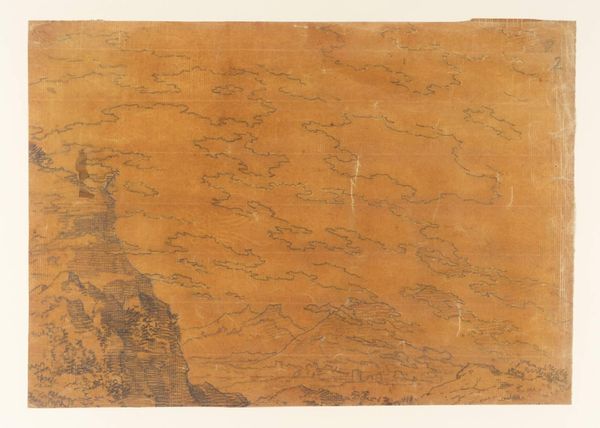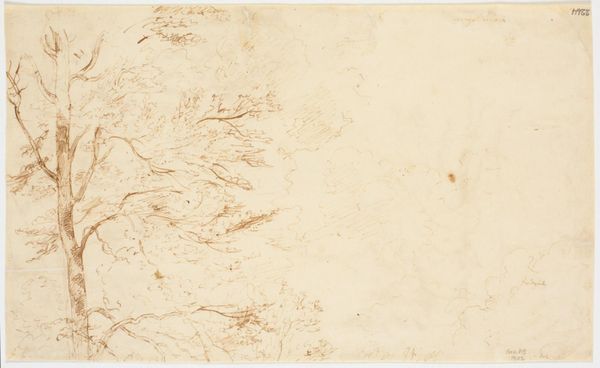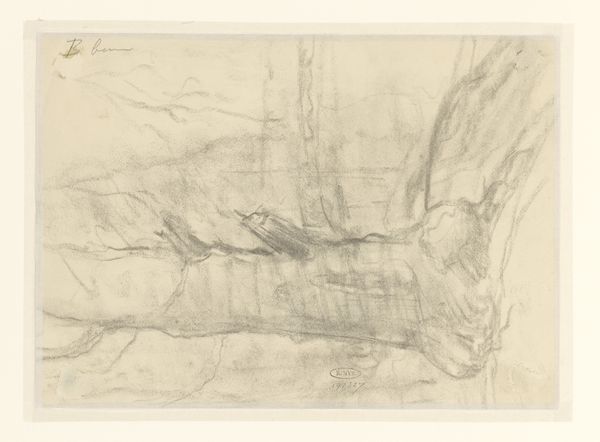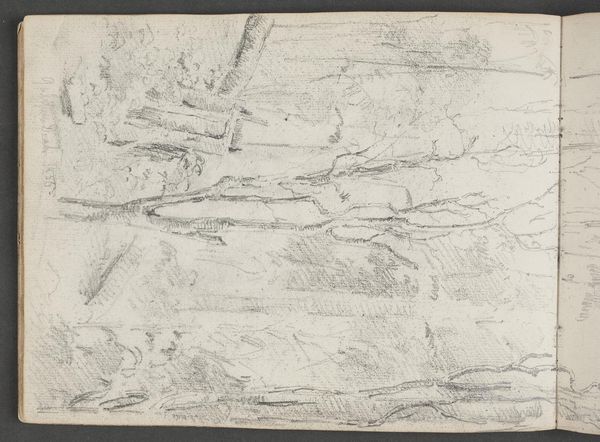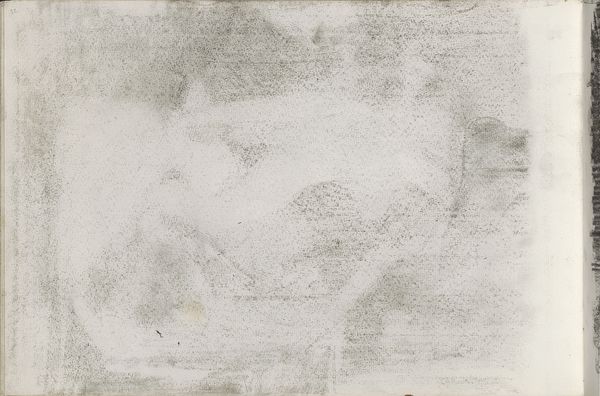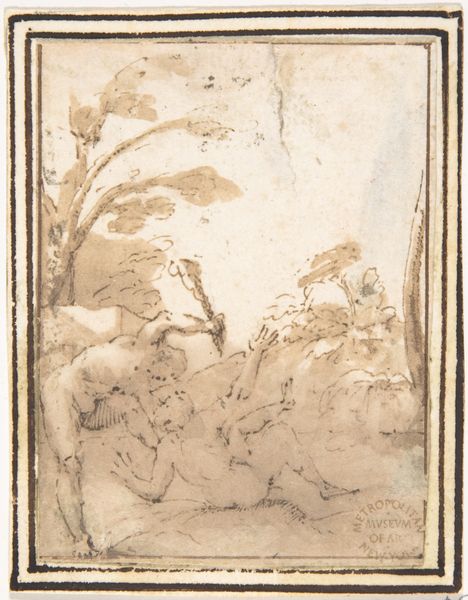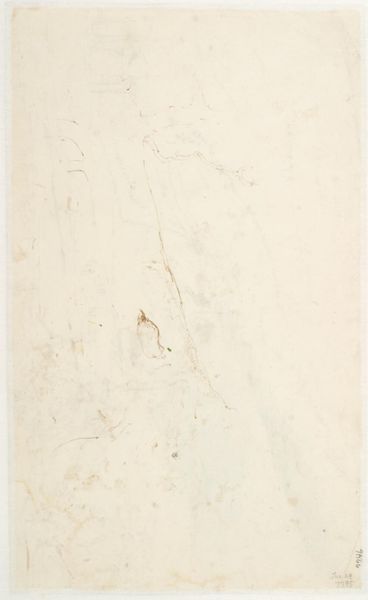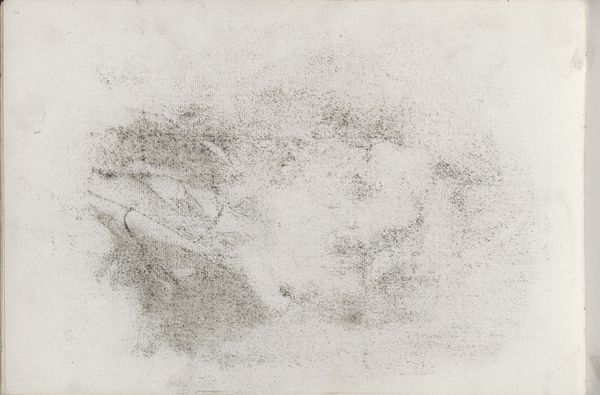
drawing, pencil
#
drawing
#
landscape
#
romanticism
#
pencil
#
line
#
realism
Dimensions: 210 mm (height) x 344 mm (width) (bladmaal)
Editor: This is Dankvart Dreyer's "View of a Landscape with Naked Hills," a pencil drawing from the 1840s. The lines are so delicate, it almost fades into the paper. There's a real sense of vastness, but also something melancholic about the barren landscape. What do you see in this piece? Curator: I see a potent statement about land use and the cultural values projected onto the landscape. The Romantic era often idealized nature, but Dreyer presents us with "naked hills"—devoid of the flourishing life we might expect. How might we interpret this near-absence as a commentary on the social forces at play? Think about land ownership, agricultural practices, even the nascent stages of industrialization impacting the Danish countryside. Editor: So, it's not just a pretty picture of nature, but a reflection on societal impact? Curator: Precisely. Romanticism wasn't simply about idyllic scenes. It also wrestled with the changing relationship between humanity and nature. Dreyer uses subtle artistic choices, like the understated lines and muted tones, to create a sense of unease. How does the emptiness of the landscape speak to a potential loss, not just of natural beauty, but also of traditional ways of life? Editor: That's a really interesting point. I hadn’t considered the social commentary aspect at all, I was just focusing on the aesthetics. Curator: It is in the visual culture where we begin to examine ideologies at work, a tool that unveils the structure of power. The "naked hills" might even allude to the vulnerability of the land, the ways it's being exposed and perhaps exploited. The pencil marks make it all seem very temporal and delicate. Editor: This makes me see the drawing in a completely different light! I appreciate how you connect it to broader social issues and challenge the conventional idea of Romantic landscapes. Curator: And I value your willingness to see beyond the surface. By questioning our assumptions and exploring the artwork's historical context, we can unlock richer, more nuanced meanings.
Comments
No comments
Be the first to comment and join the conversation on the ultimate creative platform.
